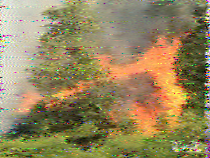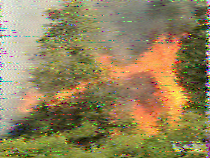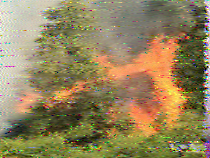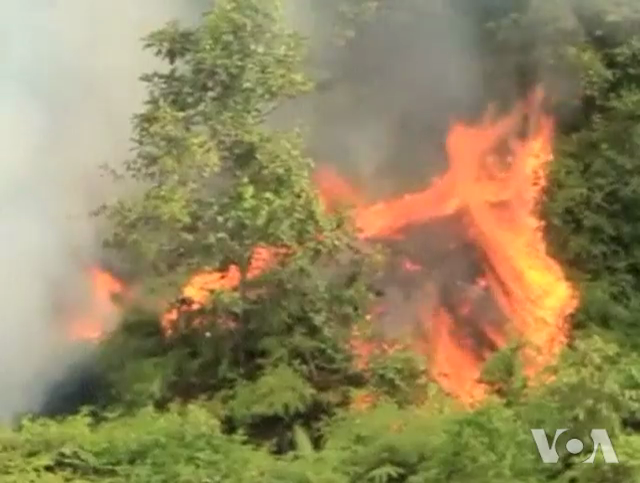SAM-LSB
AM
USB
Internet




www.rhci-online.net/radiogram/radiogram.htm
██╗ ██╗ ██████╗ █████╗ ██████╗ █████╗ ██████╗ ██╗ ██████╗ ██████╗ ██████╗ █████╗ ███╗ ███╗ ██║ ██║██╔═══██╗██╔══██╗ ██╔══██╗██╔══██╗██╔══██╗██║██╔═══██╗██╔════╝ ██╔══██╗██╔══██╗████╗ ████║ ██║ ██║██║ ██║███████║ ██████╔╝███████║██║ ██║██║██║ ██║██║ ███╗██████╔╝███████║██╔████╔██║ ╚██╗ ██╔╝██║ ██║██╔══██║ ██╔══██╗██╔══██║██║ ██║██║██║ ██║██║ ██║██╔══██╗██╔══██║██║╚██╔╝██║ ╚████╔╝ ╚██████╔╝██║ ██║ ██║ ██║██║ ██║██████╔╝██║╚██████╔╝╚██████╔╝██║ ██║██║ ██║██║ ╚═╝ ██║ ╚═══╝ ╚═════╝ ╚═╝ ╚═╝ ╚═╝ ╚═╝╚═╝ ╚═╝╚═════╝ ╚═╝ ╚═════╝ ╚═════╝ ╚═╝ ╚═╝╚═╝ ╚═╝╚═╝ ╚═╝
RSID:
<<2013-07-07T02:31Z MFSK-16
@ 5745000+1500>>
Welcome to program 16 of VOA Radiogram.
Here is the lineup for today's program:
2:26 MFSK16: Program preview (now)
4:00 MFSK16: VOA News about solar cells
4:21 MFSK32: VOA News about fires in Indonesia
1:55 MFSK32: Accompanying photo
4:18 MFSK32: VOA News about India's Science Express train
2:35 MFSK32: Accompanying photo
2:30 MFSK64: VOA News about solar observation satellite
1:50 MFSK32: Accompanying photo
1:08 MFSK16: Closing announcements
:21 Surprise mode of the week
Please send reception reports to radiogram@voanews.com
And visit voaradiogram.net
Twitter: @VOARadiogram
MFSK16 continues with VOA News...
RSID: <<2013-07-07T02:34Z
MFSK-16
@ 5745000+1500>>
Harvard and IBM Search for Better Solar Cells
VOA News
June 24, 2013
Scientists from Harvard University and IBM Corporation plan to
use the down time of thousands of personal computers in search of
the next generation of solar cell materials.
Researchers with the Clean Energy Project will ask volunteers
from IBM's World Community Grid to create a "virtual
supercomputer" for studying millions of chemical compounds in
order to to identify those suitable for harvesting the sun's
energy more efficiently.
U.S. computer giant IBM already has what is called the World
Community Grid, a network of private computers worldwide, which
can be employed for scientific research when not in use by their
owners - for instance during the night.
The Clean Energy Project has collected about 2.3 million
candidate compounds for organic voltaic cells, which can be
accessed free online.
The biggest hurdle for much wider use of solar cells is their
relative low efficiency of around 19 percent for standard
commercial silicone cells. Other materials are more efficient but
the cost is prohibitive.
Harvard scientists hope to be able to find new organic based
materials that will be more efficient and at the same time
cheaper to manufacture and install.
Volunteers in the World Community Grid already help scientists
with projects such as the fights against AIDS, childhood cancer
and malaria.
http://www.voanews.com/content/harvard-ibm-solar-cells/1688368.html
RSID: <<2013-07-07T02:38Z
MFSK-32 @
@ 5745000+1500>>
This is VOA Radiogram in MFSK32
VOA NEWS
Indonesian Fires Reveal Unfulfilled Environmental Promises
Brian Padden
July 01, 2013
Singapore and Malaysia recently suffered through the worst air
pollution crisis in 16 years, due mostly to slash-and-burn
deforestation fires in Indonesia. The president of Indonesia has
apologized and promised to investigate the cause, but his public
commitment to reduce pollution and protect the environment, at
least in the short term, have not slowed the rate of
deforestation.
It's an annual occurrence in the dry season: a smoky, hazardous
haze blankets southern Malaysia and Singapore. This year it was
so bad that in some affected areas there was a 100 percent rise
in the number of asthma cases. Hundreds of schools were closed,
and the government of Malaysia distributed gas masks.
The source of the pollution lies across the Malacca Strait in
Indonesia where illegal burning of forests to clear space for
palm oil plantations continues unabated.
Indonesian President Susilo Bambang Yudhoyono offered a public
apology.
"For what has happened, as president, I apologized and asked for
the understanding of brothers in Singapore and Malaysia," he
said.
The Indonesian president promised to prosecute anyone involved in
illegal slash-and-burn activities. Eight Southeast Asian
companies are reportedly under investigation.
But the ongoing deforestation seems to contradict past promises.
In 2009, President Yudhoyono pledged to reduce by 26 percent
greenhouse gas emissions, caused mostly by deforestation. And in
2011, he instituted a moratorium protecting designated forest
areas. In exchange, environmentally conscious Norway pledged $1
billion to support these efforts.
Ariana Alisjahbana at the World Resources Institute says local
officials are not supporting the national plan.
"Actually it's a lack of coordination and lack of enforcement. So
when we look over all the different rules Indonesia has on the
books, theoretically speaking they're very, very good ones. But
they're just not enforced," said Alisjahbana.
Although the economic incentive to replace forests with farms
hampers conservation, Alisjahbana says long-term progress is
being made.
"Only four percent of the fires, of the fire alerts, happened in
protected areas. So I think one of the really good solutions is
to actually, you know, designate the area as protected," she
said.
But she says a greater commitment to stop the slash-and-burn
deforestation through incentives and strict penalties for
violations is needed.
http://www.voanews.com/content/indonesian-fires-reveal-unfulfilled-environmental-promises/1693177.html
MFSK32 image follows: Burning of Indonesia forest to clear space
for palm oil plantations.
RSID: <<2013-07-07T02:43Z
MFSK-32
@ 5745000+1500>>
Sending Pic:210x158C;
|
SAM-LSB |
AM |
USB |
Internet |
|
|
|
|
|
RSID: <<2013-07-07T02:45Z
MFSK-32
@ 5745000+1500>>
Please send reception reports to radiogram@voanews.com
And visit voaradiogram.net
Twitter: @VOARadiogram
VOA Radiogram continues with VOA News in MFSK32...
RSID: <<2013-07-07T02:45Z
MFSK-32
@ 5745000+1500>>
VOA NEWS
India Uses Railway as Mobile Science Classroom
Aru Pande
June 26, 2013
NEW DELHI — India's railway system is one of the largest and
busiest in the world. But it is not just for passengers. The
Indian government is utilizing this vast network to provide
children in the remotest corners of the country with a moving
classroom.
Raghav Pandya loves science, so much so, that he spends six
months out of the year on this train to help share his passion
with youngsters across India.
"I am passionate about spreading and popularizing awareness
regarding scientific knowledge and mechanisms that are
surrounding us. People want to know why it is and how it is,"
said Pandya.
Pandya is one of 40 postgraduates who make the Science Express
train their home as it travels 19,000 kilometers throughout India
from April to October of this year.
The train will stop at 62 different locations, including here in
the Indian capital, where hundreds of students line up to get
their chance to see exhibits focusing on biodiversity,
conservation and climate change.
Crowds flock to Science Express
More than 8.5 million people have visited the mobile exhibition -
a project that India's prime minister launched in 2007 to attract
young people back to science.
Department of Science and Technology advisor Chander Mohan was
tasked with finding a way to reverse what he says was a growing
disinterest in the field.
"Why not take science to the people instead of taking people to
the science? And what better way than the Indian railway network,
which is so vast that it is the largest network in the world. And
it is stretched across the country. Each and every nook and
corner of India is connected by the railway network," said Mohan.
The train stops at each station for three to four days and young
people have a chance to take part in the hands-on laboratory
where educators help them conduct experiments highlighting math
and science principles.
Educators reach out
For some of these children, particularly from small towns in the
farthest corners of India, this is a rare opportunity to learn
beyond the four walls of their classroom.
Seeing their reaction makes riding the rails worth it for
educators like Pandya.
"Fascinating experiments or sort of things - when they come to
know - they say 'oh wow.' So this 'wow factor' you see it in
their eyes. In our childhood we have not gotten such sort of
exposure," said Pandya.
The Science Express train is making its way through eastern
India, with stops planned in West Bengal and Orissa states in
July. The moving exhibit is expected to attract its 10 millionth
visitor by the end of this year.
http://www.voanews.com/content/india-railway-used-as-mobile-classroom-science-express/1689839.html
RSID: <<2013-07-07T02:49Z
MFSK-32 @
5745000+1500>>
MFSK32 image follows: Indian students in line to enter the
Science Express train.
RSID: <<2013-07-07T02:49Z
MFSK-32
@ 5745000+1500>>
Sending Pic:284x158C;
|
LSB |
AM |
SAM- USB |
Internet |
|
|
|
|
|
RSID: <<2013-07-07T02:52Z
MFSK-32
@ 5745000+1500>>
Next on VOA Radiogram, VOA News in MFSK64...
RSID: <<2013-07-07T02:53Z
MFSK-64
@ 5745000+1500>>
NASA's IRIS Eyes Our Sun
Suzanne Presto
June 28, 2013
If you've ever stood beside a roaring fire, you know it can get
pretty hot. And if you get too hot, you could just walk away,
because the farther you are from a heat source, the cooler it is
around you.
But that does not always hold true everywhere.
The surface of the sun is about 6,000 degrees Celsius, but its
upper atmosphere is about one million degrees hotter, even
though it's farther from the sun's heat-generating core.
Scientist Jeffrey Newmark says it's a mystery.
"What causes this rise? How does the energy transfer from the
surface - the cool surface - to this hot outer atmosphere? This
is the question that IRIS, the science of IRIS, is going to
address," he explained to reporters at a NASA briefing.
Newmark is the program scientist for IRIS, NASA's Interface
Region Imaging Spectrograph. It's a small satellite that will
observe the way solar material heats up as it rises through the
sun's lower atmosphere. IRIS, with its ultraviolet telescope,
will provide high-resolution images and even show individual
towers of energy released by the sun. It will orbit our Earth as
it studies our sun.
The mission
NASA scientists say this new mission will yield insights into
solar activity that is believed to be linked to power outages
here on Earth.
The IRIS mission began Thursday night, when an aircraft flying
over the Pacific Ocean released Orbital Sciences' Pegasus XL
rocket that carried NASA's newest solar observatory into space.
The mission started 24 hours later than planned. Mission
managers had to delay the launch from Vandenberg Air Force Base
in California by one day because of a power outage at the base.
Pete Worden, director of NASA's Ames Research Center in
California, said in a pre-launch briefing that this twist
underscored the importance of the IRIS mission.
"We believe that some - maybe a lot - of power outages actually
have a lot to do with solar activity, so the better we can
understand the physics going on, the better we can understand
that activity, the better that we could potentially predict and
mitigate some of these problems," he said.
The sun's ultraviolet emissions are generated in the mysterious
interface region. They affect our planet's climate and the space
environment near Earth.
Wave of the Future
NASA's Worden says the IRIS mission also shows a new direction
for the space agency.
"It demonstrates, I think, the wave of the future that we're
going to be doing a lot more with lower-cost, smaller missions,
at the same time getting really Earth-shaking science," Worden
said. "This is the first mission that will really tell us the
detailed physics that's going on at the solar surface and the
atmosphere above it."
The $181 million IRIS mission is set to last two years, but
scientists say the solar explorer could function much longer.
http://www.voanews.com/content/nasas-iris-eyes-our-sun/1691494.html
Next on VOA Radiograom an MFSK32 image: The fully integrated
spacecraft and science instrument for NASA's Interface Region
Imaging Spectrograph (IRIS) mission is seen in a clean room at
the Lockheed Martin Space Systems Sunnyvale, California facility
in this undated NASA handout photo.
RSID: <<2013-07-07T02:55Z
MFSK-32
@ 5745000+1500>>
Sending Pic:256x134C;
|
SAM-LSB |
AM |
USB |
Internet |
|
|
|
|
|
RSID: <<2013-07-07T02:57Z
MFSK-32
@ 5745000+1500>>
Please send reception reports to radiogram@voanews.com
And visit voaradiogram.net.
Twitter: @VOARadiogram
Thanks to colleagues at the Edward R. Murrow shortwave
transmitting station in North Carolina.
I'm Kim Elliott. Please join us for the next VOA Radiogram.
This is VOA, the Voice of America.
RSID: <<2013-07-07T02:58Z
MFSK-22
@ 5745000+1500>>
Thank you for listening to VOA Radiogram via the Edward R Murrow
shortwave transmitting station in North Carolina.
www.rhci-online.net/radiogram/radiogram.htm
http://voaradiogram.net/page/41
VOA Radiogram transmission
schedule
(all days and times UTC)
Sat 1600-1630 17860 kHz
Sun 0230-0300 5745 kHz
Sun 1300-1330 6095 kHz
Sun 1930-2000 15670 kHz
All via the Edward R. Murrow transmitting station in North Carolina.
![]()